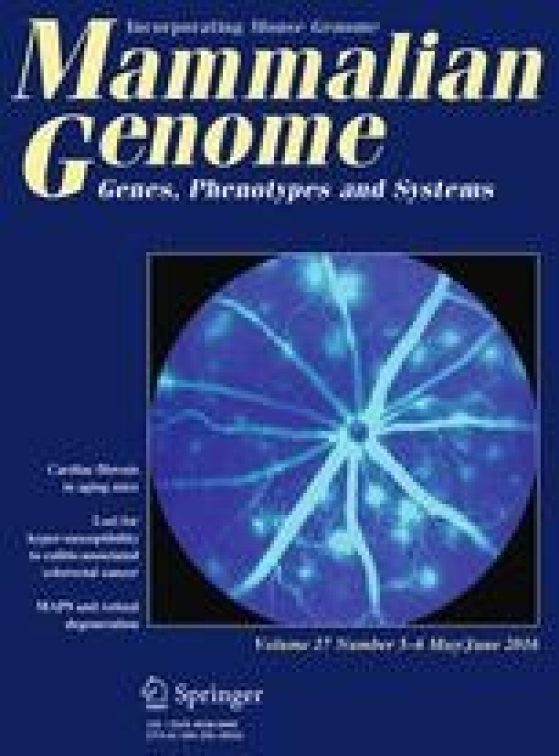 J. M. Johnson, G. G. Levy, R. J. Westrick, P. K. Tucker and D. Ginsburg
J. M. Johnson, G. G. Levy, R. J. Westrick, P. K. Tucker and D. Ginsburg
Mammalian Genome, 1/19/2008
Mvwf1 is a cis-regulatory mutation previously identified in the RIIIS/J mouse strain that causes a unique tissue-specific switch in the expression of an N-acetylgalactosaminyltransferase, B4GALNT2, from intestinal epithelium to vascular endothelium. Vascular B4galnt2 expression results in aberrant glycosylation of von Willebrand Factor (VWF) and accelerated VWF clearance from plasma. We now report that 13 inbred mouse strains share the Mvwf1 tissue-specific switch and low VWF phenotype, including five wild-derived strains. Genomic sequencing identified a highly conserved 97-kb Mvwf1 haplotype block shared by these strains that encompasses a 30-kb region of high nucleotide sequence divergence from C57BL6/J flanking B4galnt2 exon 1. The analysis of a series of bacterial artificial chromosome (BAC) transgenes containing B4galnt2 derived from the RIIIS/J or C57BL6/J inbred mouse strains demonstrates that the corresponding sequences are sufficient to confer the vessel (RIIIS/J) or intestine (C57BL6/J)-specific expression patterns. Taken together, our data suggest that the region responsible for the Mvwf1 regulatory switch lies within an approximately 30-kb genomic interval upstream of the B4galnt2 gene. The observation that Mvwf1 is present in multiple wild-derived strains suggests that this locus may be retained in wild mouse populations due to positive selection. Similar selective pressures could contribute to the high prevalence of von Willebrand disease in humans.

